Every one of your employees likely holds important work knowledge that no one else on your team knows.
This knowledge could be how to run a certain process, use specific software, or deal with difficult clients.
Valuable knowledge can even be something seemingly trivial, like how to get that finicky copier to print double-sided reports.
And when those employees leave your organization, you risk losing that knowledge forever.
As a manager, you can work to preserve that information within your team by building a culture of knowledge sharing.
You’ll give your employees a way to share their valuable insights with coworkers both on and off their team. This yields huge benefits for you, your employees, and the entire business.
In this article, we’ll tell you everything you need to know about knowledge sharing, its benefits, and its challenges. Plus, you’ll learn seven ways you can start sharing knowledge at work right now.
What is knowledge sharing?
Put simply, knowledge sharing is about exchanging information within an organization. It’s how employees absorb information and skills that help them perform better at their jobs.
There are three kinds of knowledge that organizations need to share:
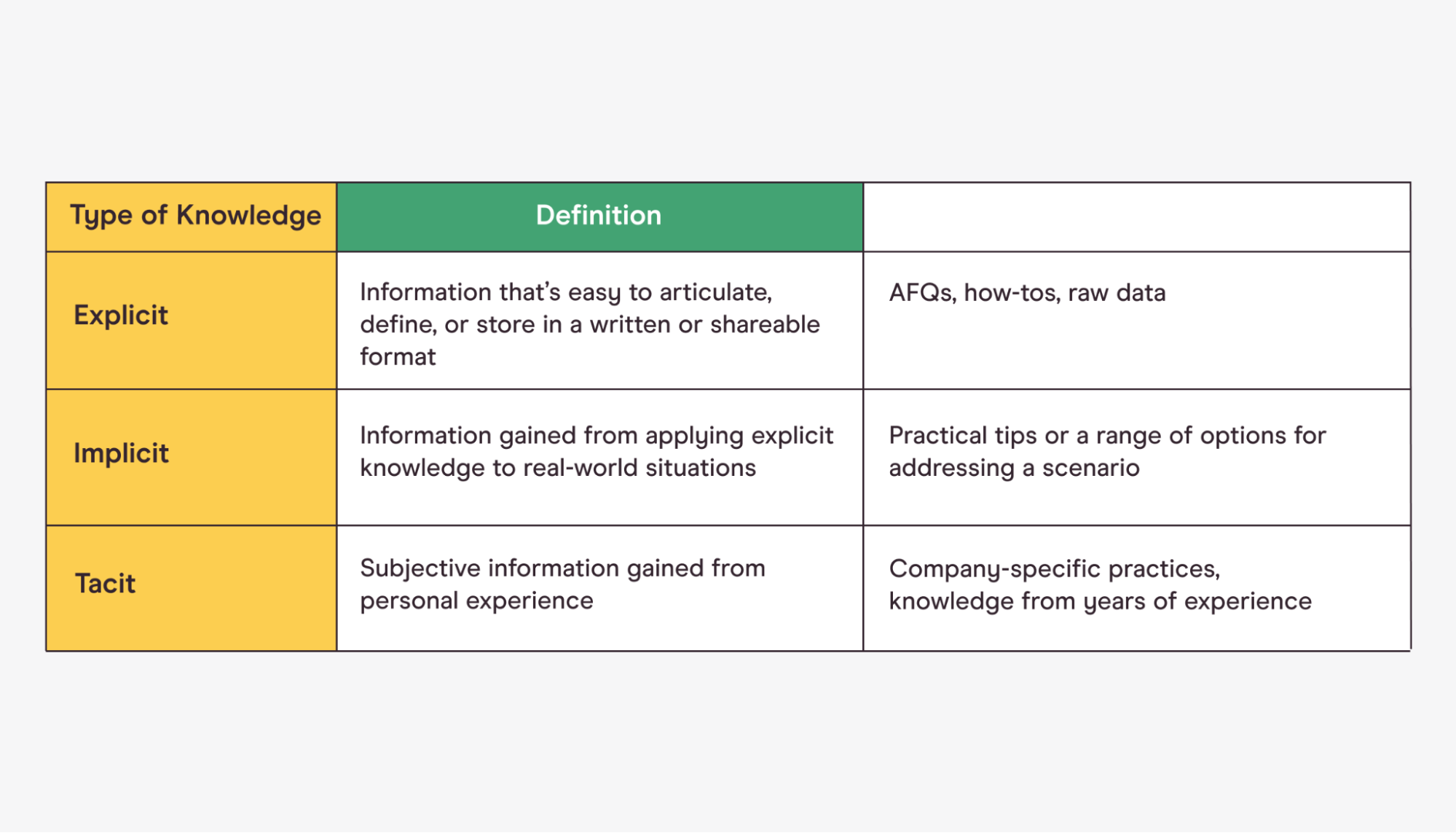
- Explicit knowledge: Practical information that’s easy to record and pass on through instructions, FAQs, or other written forms.
- Implicit knowledge: How to apply explicit knowledge to a variety of situations, such as adjusting a sales pitch based on a customer’s mood.
- Tacit knowledge: Informal information about personal or cultural nuances, such as using particular phrasing or client meeting etiquette.
All three kinds of knowledge are crucial to the success of your business, so it’s important to document and preserve as much knowledge as possible.
Because implicit and tacit knowledge can be difficult to articulate or write down, it’s important to have a variety of knowledge sharing methods so that all the information that makes your company work stays within the organization.
Later on, we’ll cover a few different ways you can cultivate a knowledge sharing culture at work.
Knowledge sharing is a way to make sure that knowledge survives turnover in your business by becoming a part of collective knowledge rather than individual knowledge.
Consider that as many as 25% more workers may need to switch occupations than before 2020. Given this trend, knowledge sharing is more important than ever.
Knowledge sharing also promotes transparency and collaboration, speeds up decision-making, and even improves the customer experience. In the next section, we’ll cover these benefits and more in greater detail.
5 benefits of knowledge sharing at work
Knowledge sharing brings huge benefits to your team or organization.
You can improve outcomes for customers, employees, and the business overall. You’ll find higher loyalty, increased morale, and a bigger bottom line.
Let’s take a closer look at how knowledge sharing benefits your team or department.
1. Increases collaboration
In a knowledge sharing culture, employees with different responsibilities get used to talking and working together.
This opens up the possibility of asking for help when needed, making future projects more collaborative and successful.
Often, employees don’t collaborate because they simply don’t know what knowledge their coworkers have. By setting a precedent of consistently asking for and receiving information and knowledge from coworkers, your employees will begin to think in a more collaborative way.
2. Encourages innovation and creativity
By breaking down information silos and encouraging knowledge sharing across departments, you’ll find your employees innovating more.
New ideas and fresh perspectives breed more ideas. Employees will be more resourceful and make connections between different knowledge areas, leading to new ways of thinking and approaching business problems.
Once you start the wheels of innovation turning, it’s hard to stop them. Sharing knowledge can be just the right push to start generating new ideas that help your business grow.
3. Engages employees and increases morale
Asking employees to share their knowledge makes them feel more valued at work.
In asking them to share their knowledge, you’re acknowledging their expertise and giving them a concrete way to contribute to the team.
When employees feel valued, they become more engaged at work. And engaged employees are happy employees, experiencing up to 43% less turnover than their non-engaged counterparts.
The bad news? Only 35% of employees in the US feel engaged at work. This can lead to high turnover, knowledge hoarding, and a toxic company culture that makes it difficult for your business to excel.

But by implementing knowledge sharing practices, you’ll start developing a culture of learning that leads to improved engagement and morale.
4. Improves productivity
Employee engagement through knowledge sharing has an even greater impact than we’ve already discussed.
With more knowledge and easier access to resources, people can work more efficiently and effectively. You’ll find it easier to motivate employees too.
In fact, engaged employees have 18% higher sales productivity, which can lead to 23% higher profitability from your team.
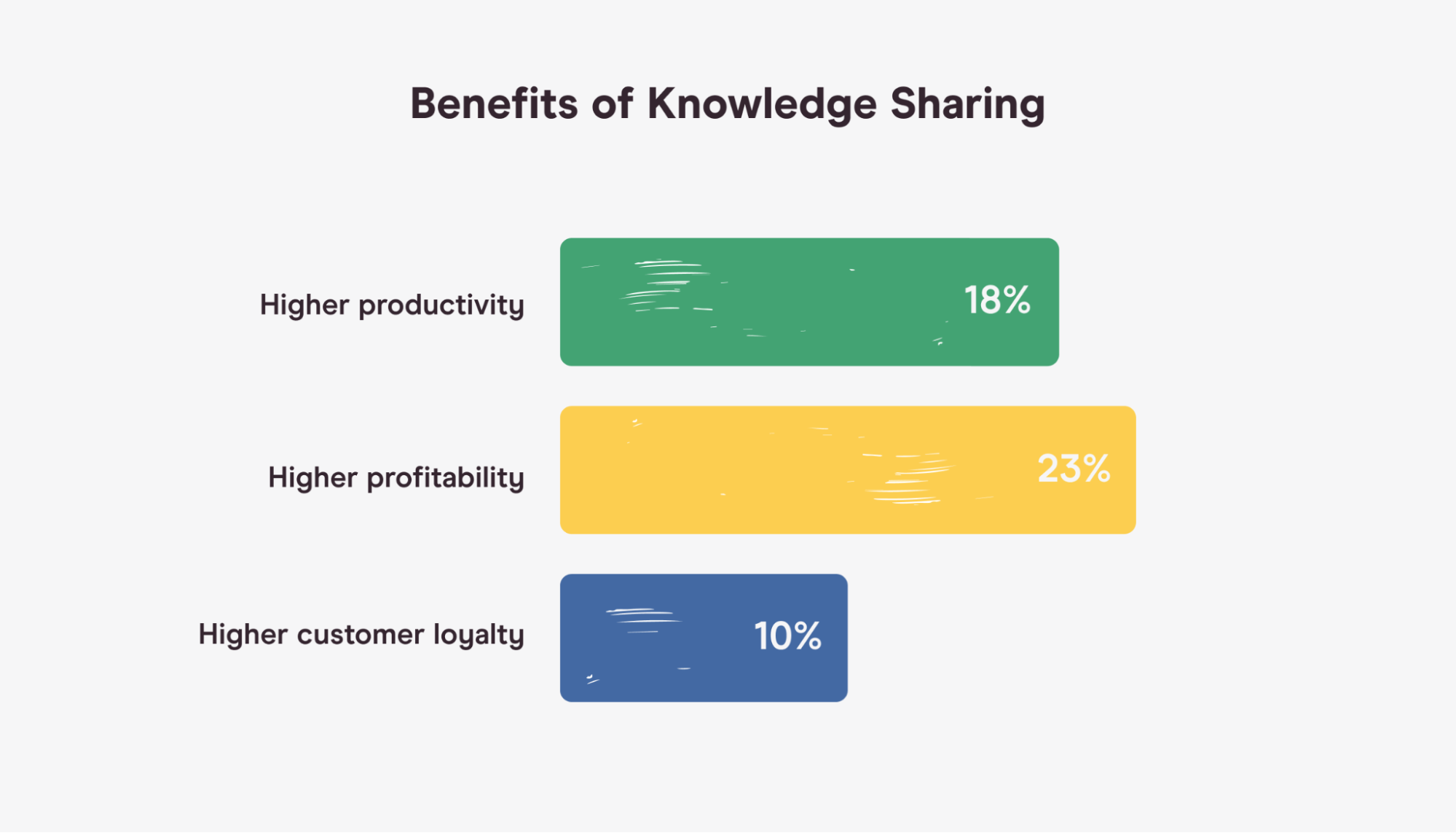
5. Delivers better results to customers
We’ve talked a lot about how knowledge sharing benefits your employees, but what about your customers?
Well, engaged, knowledgeable, and productive employees yield better results for clients across the board.
One study found that having engaged employees leads to 10% higher customer loyalty.
And having loyal customers, of course, means more revenue, free advertising, and more valuable customers in the long run.
Barriers to knowledge sharing in the workplace
While knowledge sharing benefits every member of a business and anyone who interacts with it, it can sometimes be difficult to get employees on board.
Before we jump into specific knowledge sharing practices you can use for your team, let’s take a look at some of the barriers your employees might face:
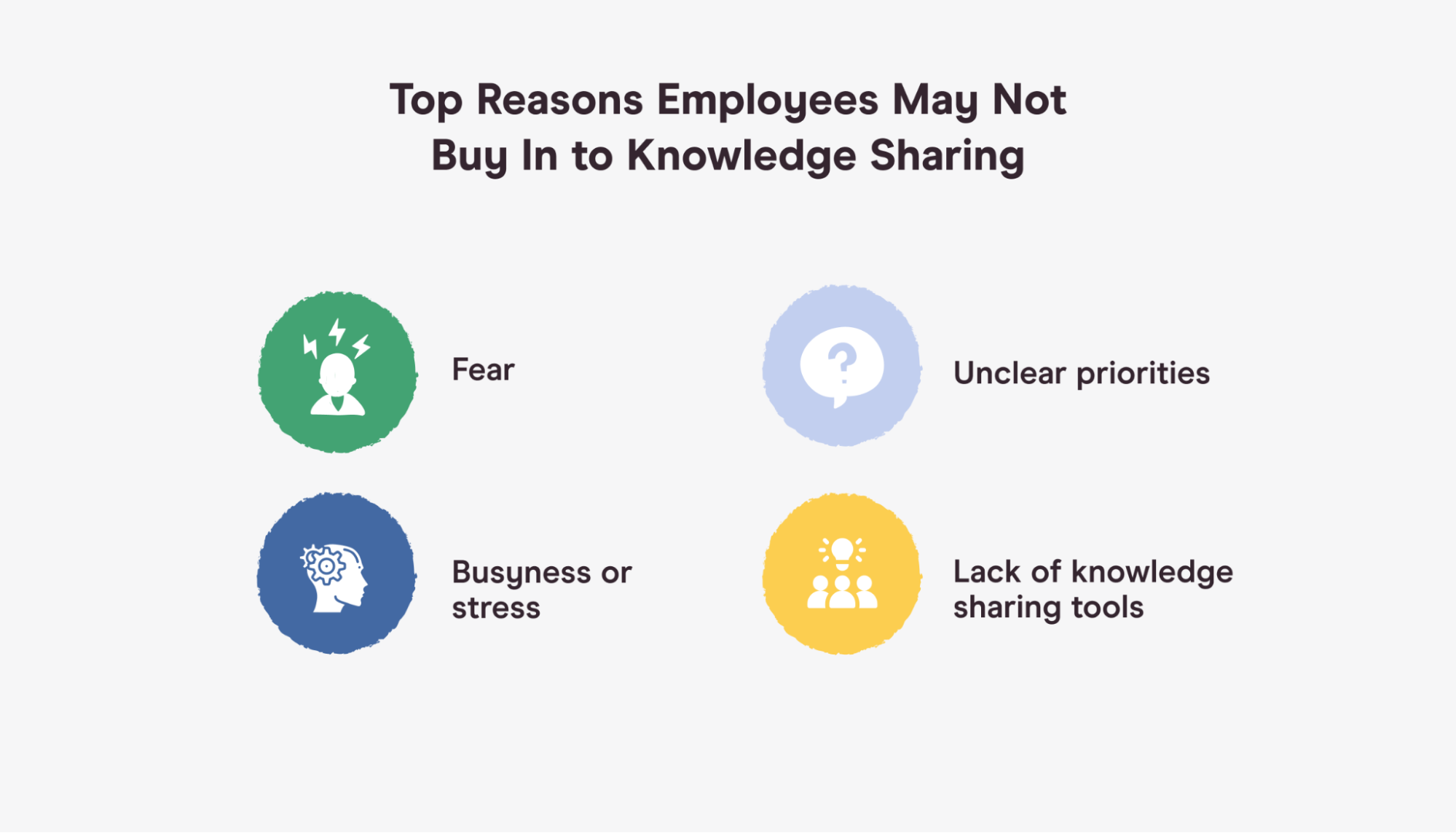
- Fear that sharing knowledge means they’re no longer needed, especially for older or specially experienced employees
- Too high of a workload, leaving no time for knowledge sharing
- Unclear priorities from managers
- Lack of a learning culture
- Confusing or unhelpful knowledge sharing tools and methods
- Remote work and a lack of in-person engagement, especially now that remote work is five times more prevalent than it was pre-COVID-19.
As a manager, understanding these barriers can help you overcome them for your team as you develop your knowledge sharing strategy.
Keep these possibilities in mind as you read through the knowledge sharing activity suggestions in the next section.
7 ways to bring knowledge sharing to your office
These seven ideas are just some of the ways to implement knowledge sharing in your workplace. Try a few different options to see what works best for your team.
1. Foster a culture of learning
Any company culture needs to start at the top, with leaders and managers who serve as role models for the entire business.
A culture of learning is the same way. As the manager, you’ll need to set an example for knowledge sharing on your team.
To start doing this, encourage employees to ask you questions about your skills and work and answer them fully and thoughtfully.
You can also defer to more experienced employees when you are asked a question in someone else’s area of expertise. This approach demonstrates that you know everyone has valuable knowledge to share and that as a manager, you may not know everything.
2. Share your own knowledge
Set an example by being transparent and forthcoming about your knowledge and skills.
Some managers fall victim to knowledge hoarding, fearing that their subordinates will take their position if they become knowledgeable enough.
However, in a company where everyone is focused on achieving growth and innovation, this fear is unfounded. Reduce these anxieties in your employees by sharing as much or more information than you expect your employees to.
3. Build an organization-wide knowledge base
On average, employees lose up to two hours a week looking for knowledge or information they need to do their jobs, reducing productivity.
To alleviate this problem, use a knowledge management system like a wiki or another detailed resource for institutional knowledge.
This is where you can include branding guidelines, standard operating procedures, company history and values, proprietary processes, and anything else that should be part of your organization’s collective knowledge.
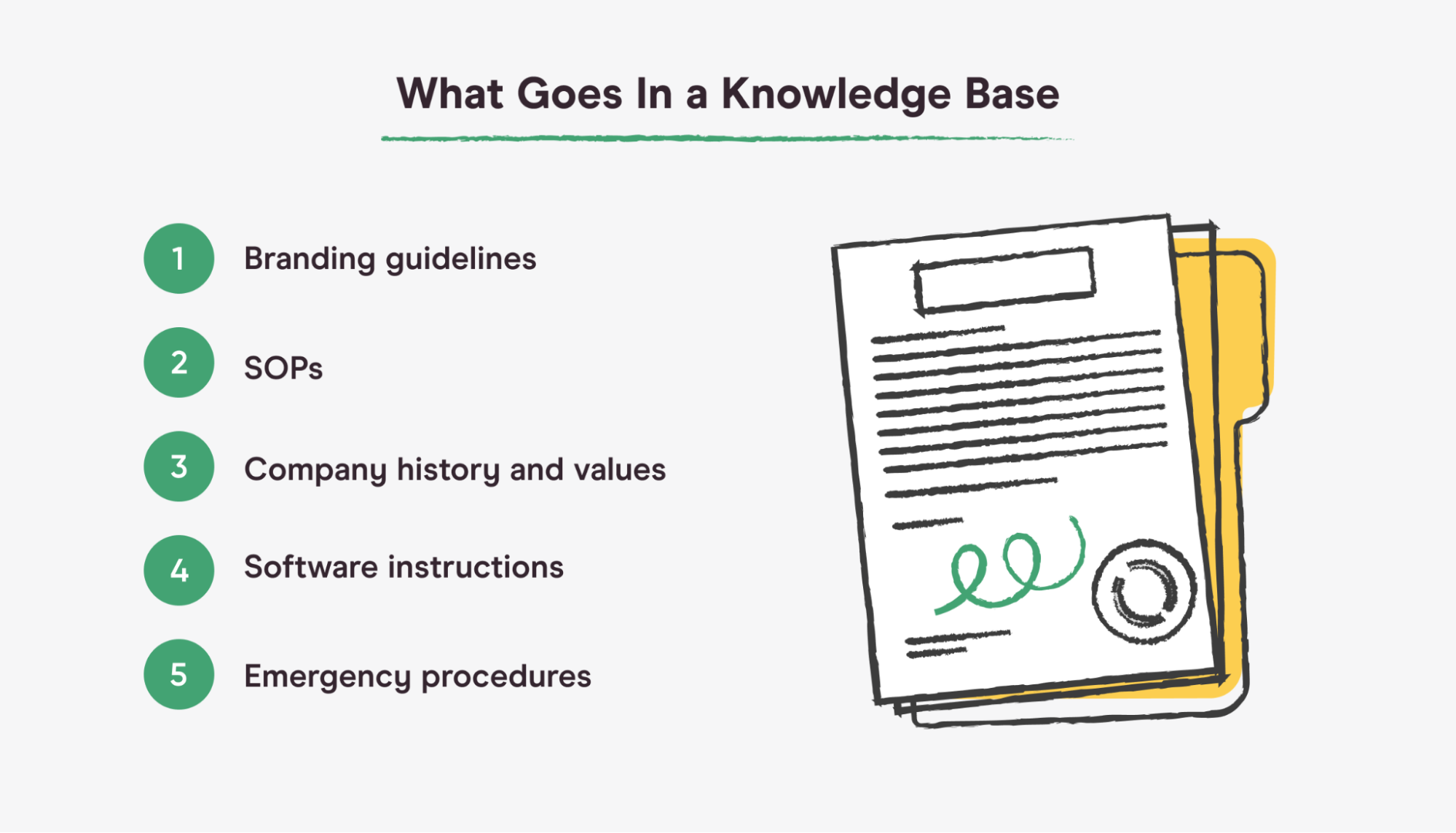
You can also include a forum or FAQ section where any employee can contribute their knowledge for others to learn from.
4. Create a mentorship program
To help train new employees and leverage the wisdom and tacit knowledge of your most experienced employees, create a membership program to facilitate knowledge sharing.
You can also pair up employees from different teams or functions for cross-training and other types of knowledge sharing.
To create a successful mentorship program, set brief but clear parameters for the mentor relationship. How often should they meet? What kind of information should they share? Is there a deliverable or goal they should meet?
As the manager, you should help your mentors and mentees set goals for their sessions. You also need to allow the time and resources for effective knowledge sharing to take place.
5. Provide a stipend for professional development
If your budget allows, consider offering a stipend or scholarship for employees to take online courses, attend training, or travel to conferences that develop their own skills and benefit the company.
You’ll need to set a few parameters for the stipend, such as:
- The maximum stipend for each employee each year
- Types of events that qualify for the stipend
- How employees will share their knowledge with the company
In a small organization, you may need to award stipends based on the greatest benefit to the business.
If you have limited resources for external professional development, make sure that employees have equal chances to access that benefit. You should also offer plenty of in-office knowledge sharing activities so that everyone participates regularly.
6. Host lunch and learns
An easy entry into knowledge sharing at work is hosting lunch and learns.
These informal training sessions offer free food and knowledge sharing during employees’ lunch breaks.
Your lunch and learn presenters can be outside speakers or employees with specialized knowledge or insights to share.
Here are a few ideas for lunch and learn topics:

- Product updates
- Cross-department training
- Employee skill-sharing
- Stress management and wellness
- Leadership and public speaking
Successful lunch and learns are casual and lighthearted. Employees shouldn’t be pressured to go but rather encouraged to participate.
7. Leverage the right tools and resources
Effectively fostering a culture of knowledge sharing depends to some extent on having the right knowledge sharing tools.
This is especially true as remote work opportunities continue to expand, with 61% of workers saying technology helps them feel more connected at work.
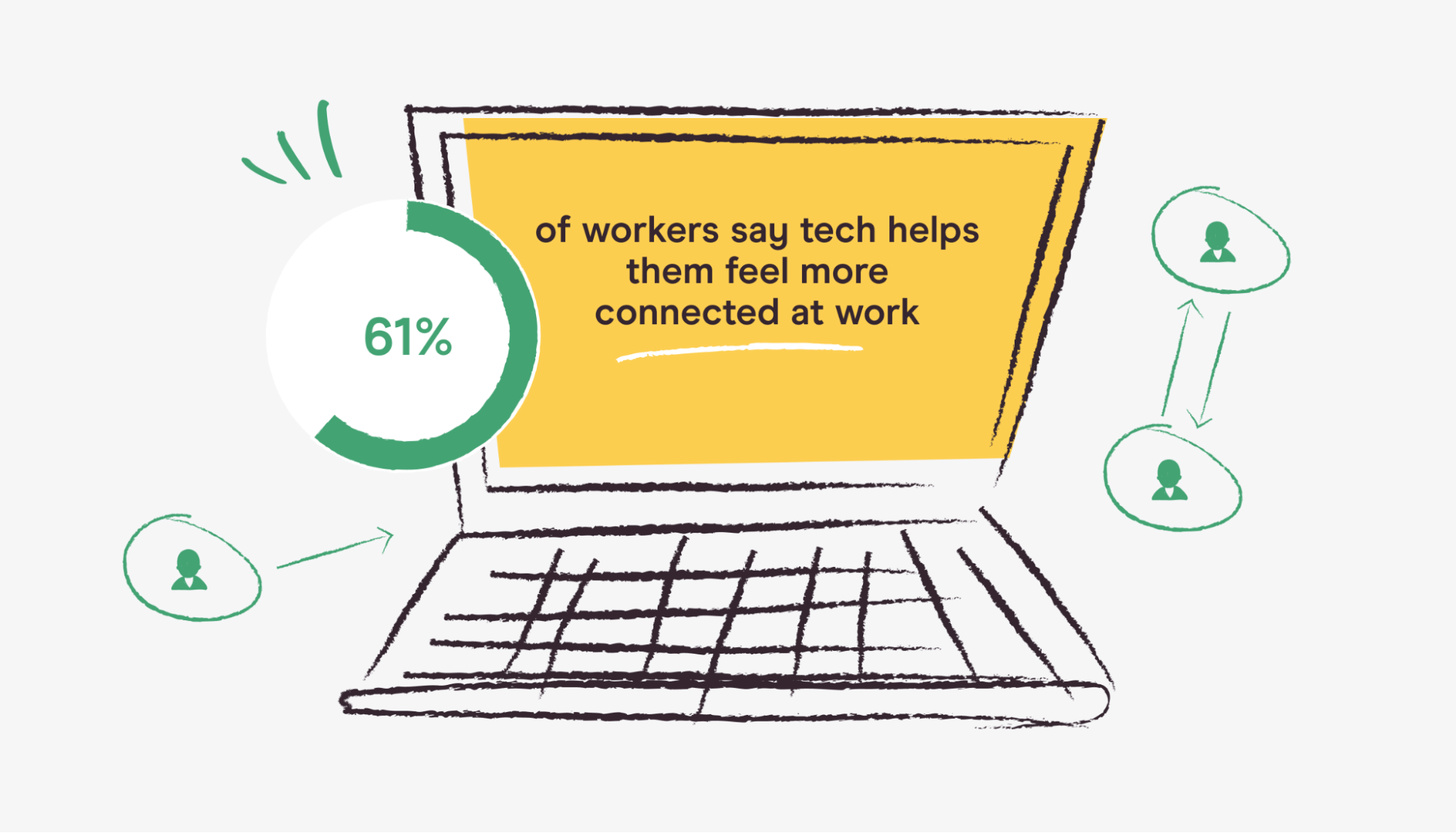
There are a few ways to approach this, and you can use any combination of tools that work well for your business.
You might consider using a knowledge sharing tool to aggregate explicit knowledge in a single location for your organization. This could include FAQs, how-tos, and other resources.
It’s also important to invest in collaborative tools like Slack. This gives employees an easy channel to directly ask coworkers for their insight and knowledge without overly disrupting the workplace.
Build a culture of knowledge sharing in your workplace
Knowledge sharing can be challenging to develop in your company culture. People may be hesitant to share their knowledge or unclear of their expectations.
Once you find effective knowledge sharing methods, however, you’ll see the amazing benefits it brings to your business. By encouraging knowledge sharing between employees, you’ll see improved productivity, collaboration, and innovation.
To jumpstart knowledge sharing in your business, check out Pareto Labs today.

